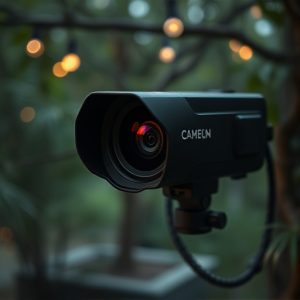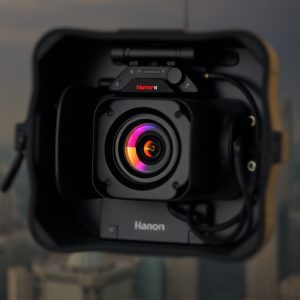Unveiling Hidden Cameras: Scanning Methods & Battery Life Secrets
Motion-activated spy camera battery life is crucial for effective surveillance, with rechargeable ba…….
Motion-activated spy camera battery life is crucial for effective surveillance, with rechargeable batteries offering longer durations (6-12 months) and reduced environmental impact compared to non-rechargeable AA batteries. Wireless charging capabilities further extend battery life. Detection methods include motion-activated sensors and signal scanning software. Modern solutions like energy-efficient components and rechargeable battery swaps enhance battery life, but it's essential to navigate legal and ethical boundaries surrounding privacy rights when using such technology.
Hidden recording devices, often disguised as everyday objects, raise concerns about privacy. This article delves into innovative signal scanning methods to detect these clandestine devices, specifically focusing on motion-activated spy cameras and their power sources. We explore techniques to enhance battery life in secret surveillance equipment while navigating legal and ethical considerations surrounding their use. Understanding these aspects is crucial for both consumers seeking protection and professionals ensuring compliance in a world where privacy is paramount.
- Understanding Motion-Activated Spy Cameras and Their Power Source
- Techniques for Detecting Hidden Recording Devices: An Overview
- Enhancing Battery Life in Secret Surveillance Equipment
- Legal and Ethical Considerations in Signal Scanning for Hidden Cameras
Understanding Motion-Activated Spy Cameras and Their Power Source
Motion-activated spy cameras, also known as hidden recording devices, are a popular choice for surveillance due to their discreet nature and advanced features. These cameras are designed to capture footage only when motion is detected, ensuring efficient use of battery life—a crucial aspect for any hidden device. The power source for these spy cams varies, but the most common options include rechargeable batteries or non-rechargeable AA batteries. Rechargeable models offer a longer motion activated spy camera battery life, making them more cost-effective and environmentally friendly in the long run. This allows users to capture multiple events before requiring a recharge, typically lasting anywhere from 6 to 12 months, depending on usage frequency and recording settings.
Understanding the power requirements of these devices is essential for effective deployment. Non-rechargeable batteries are a convenient option for temporary installations or when rapid replacements are needed. However, they require frequent swapping, which can be less practical for long-term surveillance. As technology advances, many modern spy cameras now offer wireless charging capabilities, further enhancing their convenience and battery life expectancy.
Techniques for Detecting Hidden Recording Devices: An Overview
Detecting hidden recording devices has become a critical concern in today’s digital age, where privacy breaches can have severe consequences. Several advanced techniques are employed to uncover such devices, focusing on their unique features and operating principles. One effective method is motion-activated detection, leveraging sensitive sensors to pick up on any sudden movements or changes in the environment, which could indicate the presence of a hidden camera. These sensors, often powered by long-lasting batteries, ensure continuous monitoring without frequent manual intervention.
Additionally, signal scanning plays a pivotal role in identifying hidden recording devices. By analyzing various electromagnetic signals and their patterns, security professionals can pinpoint the location of covert cameras. This process involves sophisticated software capable of detecting anomalies in radio frequency ranges, which are commonly used by motion-activated spy cameras. With improved battery life, these devices can operate for extended periods, increasing the chances of successful detection and neutralization.
Enhancing Battery Life in Secret Surveillance Equipment
In the realm of secret surveillance, maintaining a long-lasting battery life is crucial for ensuring continuous operation of equipment like motion-activated spy cameras. Traditional batteries often face challenges with prolonged use, especially in challenging environments. To overcome this, modern devices employ advanced power management strategies and energy-efficient components. One innovative approach involves integrating rechargeable batteries that can be seamlessly swapped out, allowing for uninterrupted surveillance without frequent maintenance interruptions.
Additionally, the utilization of motion sensors plays a pivotal role in enhancing battery life. By activating cameras and recording only when movement is detected, these devices significantly reduce power consumption during periods of inactivity. This smart activation mechanism ensures that energy reserves are conserved, making it possible to operate the equipment for extended periods on a single charge, thereby optimizing the overall efficiency and effectiveness of hidden recording device signal scanning methods.
Legal and Ethical Considerations in Signal Scanning for Hidden Cameras
When employing signal scanning methods to detect hidden recording devices, such as motion-activated spy cameras, it’s imperative to navigate a complex landscape of legal and ethical boundaries. The use of technology to invade privacy raises significant concerns and is subject to stringent regulations. Many countries have strict laws regarding surveillance, including restrictions on the placement and operation of hidden cameras, especially without consent.
Ethical considerations come into play when considering the potential impact on individuals’ privacy and freedom. Signal scanning technologies should be utilized responsibly, respecting personal boundaries and avoiding any form of clandestine monitoring. Ensuring that devices like motion-activated spy cameras with extended battery life are not misused is crucial to maintaining a healthy balance between security measures and individual liberties.
In conclusion, the advancement of hidden recording device signal scanning methods, including motion-activated spy cameras and their power source management, has led to a more sophisticated and nuanced approach in detecting these devices. While enhancing battery life in secret surveillance equipment remains a focus for manufacturers, it’s crucial to balance innovation with legal and ethical considerations. As technology evolves, staying informed about these developments is essential for both consumers and authorities to ensure privacy rights are respected while navigating the complexities of modern surveillance methods.


